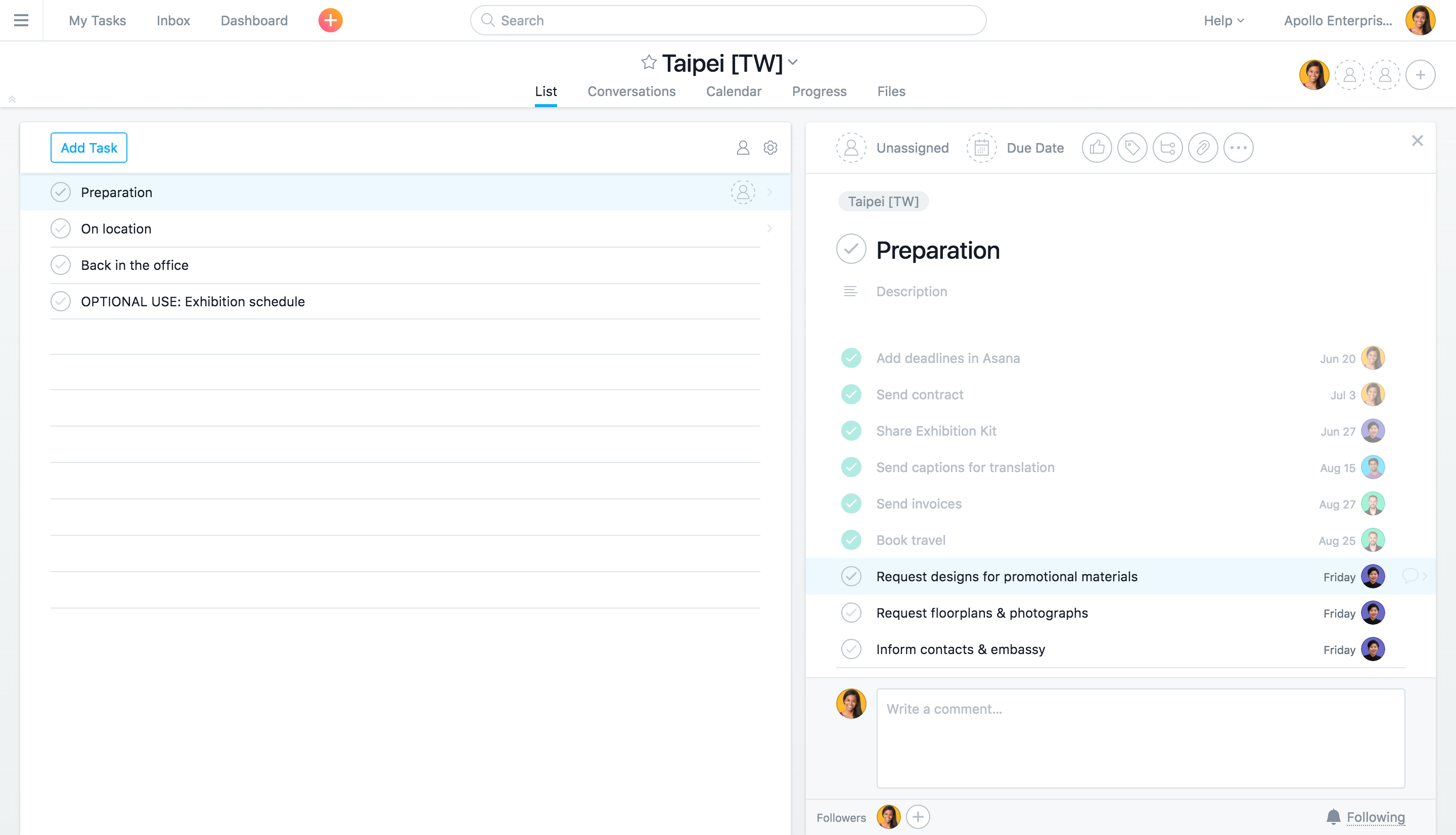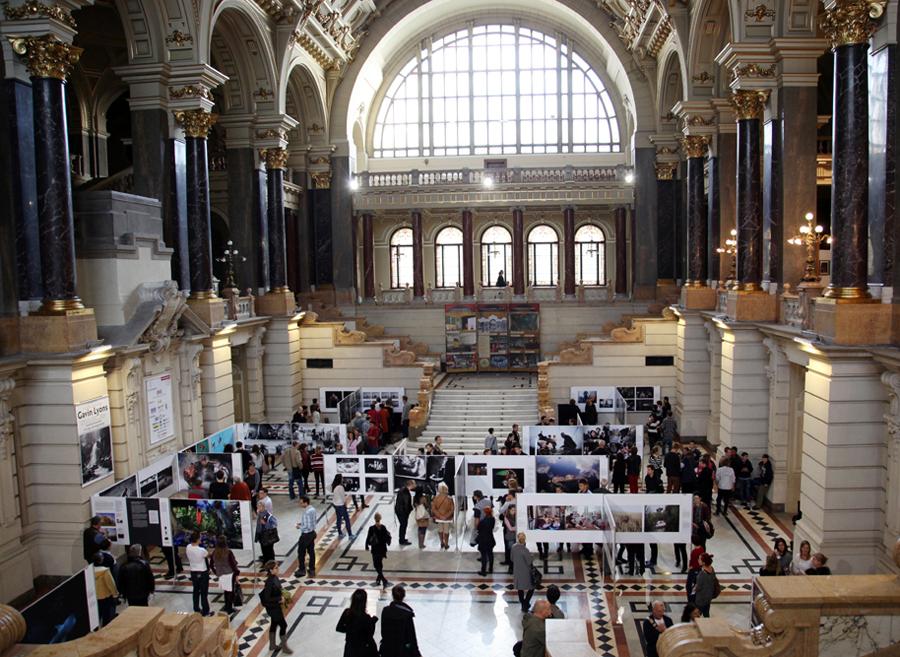How World Press Photo produces a traveling exhibition in 45 countries #withAsana

Picture this: you’re walking through a space, seeing photos of children in war-stricken zones, the Philippines’ most overcrowded jail, a turtle entangled in abandoned fishing gear, or a tennis player diving for a forehand shot. You might be in a local museum, plaza, or at a festival.
Let us frame things a little more for you: What you’re looking at is a collection of award-winning photographs, featuring the best work from visual journalists and storytellers across the globe. This exhibition is produced by the World Press Photo Foundation, and four million people across one hundred cities will see it this year alone.
For the World Press Photo Foundation, “Freedom of expression, freedom of speech and freedom of the press are indispensable, and quality visual journalism is essential for the accurate and independent reporting that makes these freedoms possible.” Their mission is to develop and promote the work of visual journalists and storytellers. They run a variety of activities, from an annual photography contest to a festival, and of course, their traveling exhibition—which features the contest’s winners.
“Asana is a big help for us to ensure that nothing falls through the cracks. Even the smaller steps of our process are in Asana—little details are the key to a successful event.”
How they do all of this is no small feat. They deliver on their mission with a team of just twenty-six who are headquartered in Amsterdam but travel often. By working with around 80 partner organizations across the globe, they produce the traveling annual exhibition and surrounding events, such as openings and awards ceremonies. But doing so involves many moving pieces—and time zones.
As a small team, The World Press Photo Foundation relies on several key practices to produce the best events possible. We spoke to Suzan van den Berg, exhibitions coordinator, to get expert advice on how they pull it off, time and time again.
Focus on the guest experience
With multiple exhibitions across the world and millions of people visiting them, it’s crucial that the World Press Photo Foundation provides a superior guest experience for all visitors. To do so, they work closely with partners to choose compelling venues and rely on regular communication to iron out details like layout and attendee flow.
Thinking of your events from your guests’ perspective is a great first step to creating an experience that will leave a lasting impression. Good questions to ask include:
- What do we want our guests’ first impressions to be?
- How will guests interact with each other or our event?
- How can guests share their experience?
- What does the layout of the event look like?
- What do we want our users to see, experience, and learn during our event?
The World Press Photo Foundation focuses on answering these questions in the initial planning stages of their exhibition process. Up to a year ahead of time, they put together a proposal for an event to share with their partners. Then they work with an external logistics company to evaluate risks and optimize the guest experience. This full process—from preparing event layouts and guest invitation lists to booking team travel and checking in with the local embassy—is managed in Asana.
This process ensures the Foundation offers an engaging guest experience. After all, their mission is to develop and promote the work of visual journalists—a mission that can’t be achieved without people to see those journalists’ works.
Have a workback schedule—and stick to it
With an ideal guest experience in mind, you can set to planning your workback schedule. This schedule will guide everything you do leading up to, during, and after the event. For the World Press Photo Foundation, this involves a template project in Asana that consists of four chapters, as they like to call them:
- Before the exhibition
- During exhibition building and opening
- When exhibition managers return to the office
- After an exhibition is over
Each chapter covers a specific period of time in their event planning process. With a standard workback schedule in place, they ensure their entire team—most of whom are traveling—know who’s doing what, by when. “Asana is a big help for us to ensure that nothing falls through the cracks. Even the smaller steps of our process are in Asana—little details are the key to a successful event,” says Suzan.
It’s also important that your workback schedule includes time not just for planning and the execution of events, but also to unpack the event and tie up loose ends afterward. Here’s a template event planning project that might be useful:

Plan for setbacks
No event is without its setbacks. For the World Press Photo Foundation, setbacks can come from dealing with censorship laws, constant travel, customs and immigration, and working with a large number of partners. Their method for staying ahead of setbacks—and handling them quickly and efficiently when they arise—is to evaluate risks in detail with partners when kicking off work and communicating often during the process so issues can be dealt with.
Setbacks are common for events, but they don’t have to be. Planning for potential problems is easy when your team involves all stakeholders early on, evaluates risks upfront, and has a process for handling issues when they arise.

Communicate clearly and often
With a small and distributed team, communication is one of the most important parts of the World Press Photo Foundation’s success in producing events. “Our team is committed to communicating clearly with everyone, always,” says Suzan. To do this, they rely on several tools depending on stakeholders—email, Slack, phone conferences, and of course Asana. Asana tasks include detailed notes that may otherwise get lost in the shuffle.
Whether you’re communicating with your immediate team or with an outside vendor or partner, it’s crucial to keep key stakeholders in the loop. Finding a cadence for communication (that’s not related to an immediate need) is important, whether that’s a weekly call or quarterly update. For more immediate communication, set up guidelines for the best medium for the team to communicate with each other so everyone’s on the same wavelength.
When the World Press Photo Foundation team is in the office, they can just turn around and chat with each other, but they know when someone’s traveling, they need to set up phone calls for regular check-ins. Find a way that works for your team to communicate, and the steps to producing a successful event will feel like a walk in the park!
Always debrief after the event
Finally, Suzan and her team rely on debriefing as a key way to keep their events successful. Her team discusses with partners how the exhibition and events went for them, and what her team could do better. They also debrief with their own internal team, looking at how many visitors attended, the press the exhibitions received, and how they can keep evolving their events.
When you don’t have to sweat the small stuff, you can focus on creating events that provide the best possible experience for your attendees.
Sometimes, debriefs raise previously unknown issues or needed actions that can be proactively addressed for future events—such as the need to complete specific customs documents. The team may add a new task to their Asana template to make sure it’s noted for future events.
Debriefing after an event is crucial to helping your team produce high quality, engaging events. By reviewing what went well, what could go better, and new ideas that may have arisen, your team will have the chance to keep evolving your events so guests are delighted over and over again.
Create great events
When you don’t have to sweat the small stuff, you can focus on creating events that provide the best possible experience for your attendees. With a streamlined process, the World Press Photo Foundation has been able to focus on evolving their events.
For example, they now have an annual digital storytelling contest in addition to their annual photography competition, providing more compelling content for the traveling exhibition. They’ve also been able to keep up with the evolution of visual journalism: one of their 2015 winners snapped their photo with their smartphone.
Want to learn more about planning events and managing other marketing programs successfully? Get our free guide on how to create effective processes that turn your marketing strategy into results.
Photo credits: Evert Elzinga and Werry Crone

